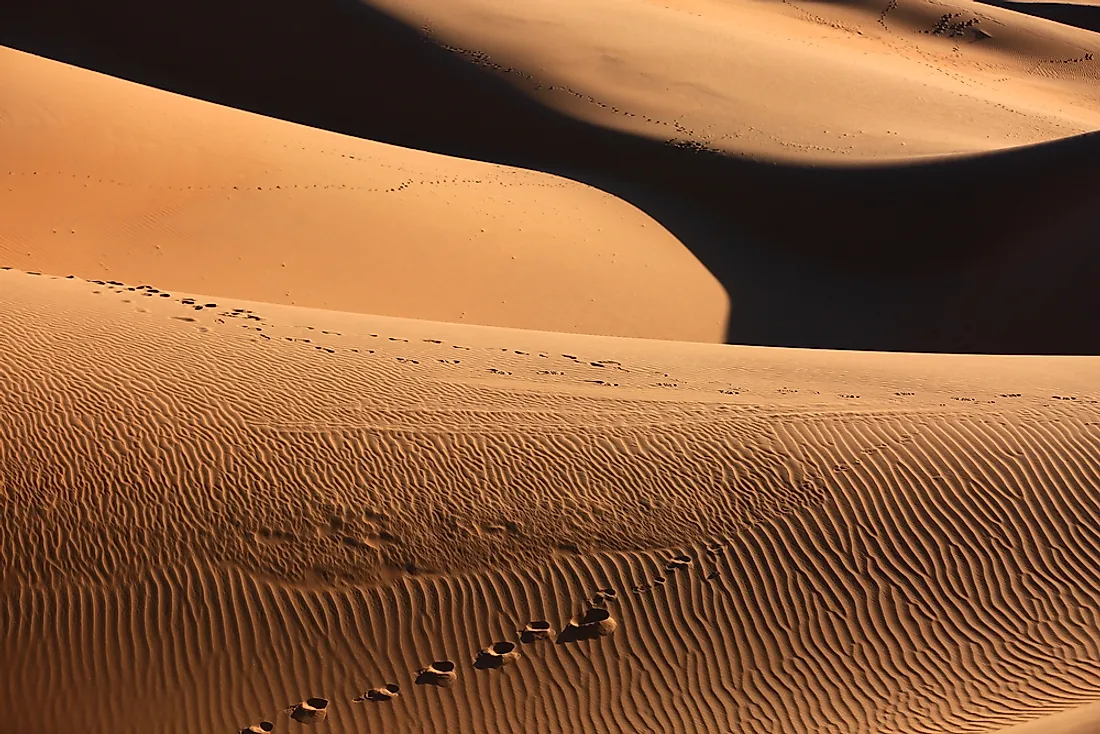Where Is The Ordos Desert?

Location And Description
The Ordos Desert is a desert that lies on a plateau in the northern parts of the People’s Republic of China. Other names for the desert are the Bad Water Desert and the Muus-us Desert. The Ordos occupies sections of Inner Mongolia (Autonomous Region of China), the Ningxia (An autonomous Entity of China), and the provinces of Gansu and Shaanxi of China. The desert is nearly enclosed completely by the Great Bend, also called the Ordos Loop, of the Yellow River to the north, east, and west. The nearby Gobi desert is separated from the Ordos Desert by some mountain ranges including the Yin, the Sheitenula, and the Kara-naryn-ula Mountains. In the east and south, the historical Great Wall of China serves as the boundary between the Ordos and the extremely fertile loess region.
As expected, the soil in the desert, a combination of sand and clay, is extremely poor for agriculture. The desert itself extends over an area of about 35,000 square miles. Interestingly, the Ordos Desert is a combination of two deserts namely the Kubuqi Desert in the northern side while the Muu-us Desert is occupying the southern portion. The Kubuqi Desert is seventh in the world in terms of size while the Muu-us ranks eighth.
Geography And Climate
Simply put, the Ordos forms a step between the Himalayas and the low-lying plains of eastern China. The southern side of the plateau has an elevation of about 5000 feet. The northern side of the Yellow River’s great bend is full of a succession of sand dunes formed by sands of the Kuzupchi River. The sand measures up to 50 feet in height and in some places come close to the Yellow River. On the left bank of the Yellow River, the dunes are wound by dry riverbeds.
Rainfall received in the desert averages around 250 millimeters every year, most of which is from thunderstorms in the summer. Also, there are several ephemeral streams and salty lakes. Winters are extremely cold.
Habitat
Vegetation is dominated by montane shrub-lands and grasslands. In the north, shrubs growing include Calligonum arborescens and Hedysarum scoparium. There are also some native grasses and herbs growing such as Bromus inermis. Along the sand belt separating Huang He from the sand dunes is packed with overgrown wormwood, the liquorice root, and the Siberian pea tree. In a bid to curb the widespread desertification, the Chinese government, in the 1960s, planted a belt of drought-resistant plants along the eastern and southern edges of the plateau but had limited success. Consequently, the area serves little economic significance as agriculture is poor.
The Yin Mountains have forests that begin at an elevation of at least 5000 feet. Aside from the trees, wildflowers and animals are also available. The most abundant species are bird species. Some rare bird species of the world such as the Relict Gulls breed in the salty lakes in the Ordos such as Lake Hongjiannao. In fact, for this particular bird species, the colony at the Ordos is the largest in the world. While the present mammal species are unclear, snow leopards, Bactrian camels, Przewalski's horses, and Przewalski's horses have inhabited the area in times past.











